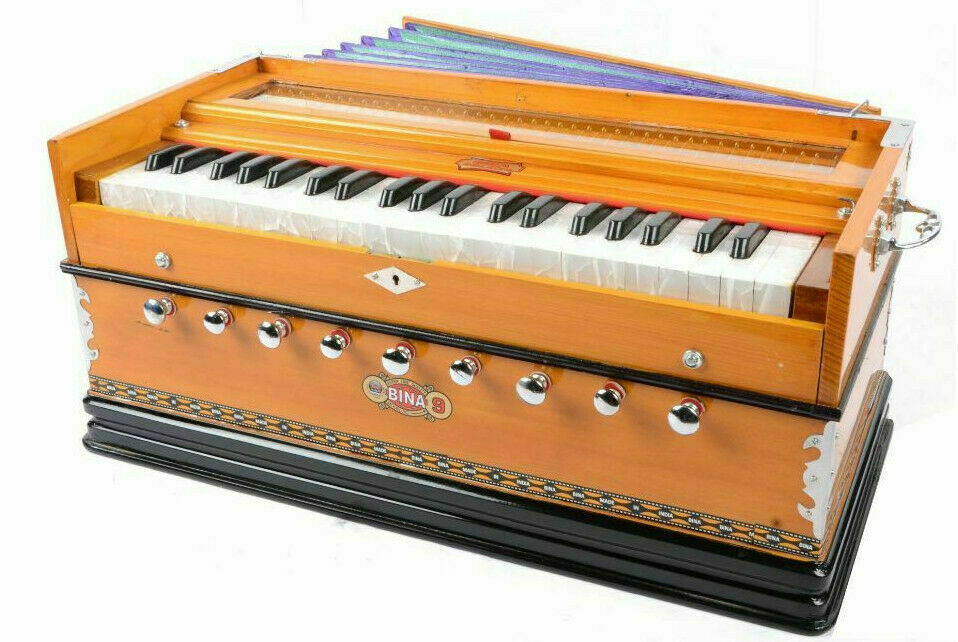-40%
Harmonium "Talyanka" 12 x 3V, 5-voice, keyboard, Tula accordion.G-26. Russia
$ 481.84
- Description
- Size Guide
Description
G26 the NATIONAL ACCORDION "TALYANKA"12x3-5-voice, keyboards, tonality-major/d minor,
300x175x295 mm,
5 kg.
Comes with a cover and straps.
Manufacturer: Tula Accordion
Color: Green
Left hand ready - Bass buttons: 3
Gross weight (kg): 5.6
Right hand-Keys / Buttons: 12
Right hand-Voices: 5
The company "Tula Accordion" continues the tradition, leading from the time when Russia began to appear the first harmonics. After all, Russian production of harmonics began in Tula.
The most primitive, single samples of hand harmonics were made by Tula masters – brothers Shkunaevym in their home workshop. Around 1820, the gunsmith Timothy Vorontsov started the production of simple hand harmonics in the basement of his samovar factory.
In 1830, the armorer Ivan Sizov brought a simple 5-valve accordion from the Nizhny Novgorod fair. First, he opened a harmonica workshop, in which, copying this sample, began to produce the same, and then organized a mass production of harmonics.
The most significant factory of harmonics in Tula was the factory of the Kiselev brothers, which mainly specialized in the production of two - and three-row Viennese harmonics.
The success of this factory is evidenced by the fact that in 1900 At the international trade fair in Paris two - and three-row Viennese harmonics Kiselyov brothers received awards. In 1905-1907 the factory began to produce three-row chromatic harmonics – "left on the right (elective) and foot basses", which by 1914 were marked with gold, and three silver and bronze medals.
Tula was the main supplier of harmonics for the entire Russian Empire. The audio capabilities of the accordion, imported from abroad, did not satisfy the Russian musicians, and had already revealed one of the artistic and stylistic features of Tula accordion – their unique sound chamber. The number of artisans-harmonicop increased from year to year, accordion hunting became in Tula the second largest. The highest point in the production of harmonics in Tula reached in 1912-1913. Then, due to the First world war and post-revolutionary events, the production of harmonics decreased.
At the end of the civil war in Russia in the early 20th century, a new stage begins: artisans begin to unite in artels.
In the terrible years of the second world war, the production of musical instruments was interrupted everywhere. But the people's craving for music was so great that demanding letters began to come from the army: "Give harmony and bayans! With song easier to fight!". And in 1943 the output of instruments was renewed. In severe wartime accordion and Bayan rightfully took their place in the army with weapons.
In 1951 for release of products of high quality the factory is awarded the Diploma of the Exhibition of achievements of national economy of the Soviet Union of I degree. Tula accordion was exhibited in 1967 at the international exhibition in Montreal. In Tula at that time produced more than half of the Soviet bayans. Upscale, unique multi-timbral bayans "levsha" was in the 1970s, the years marked by various medals. Bayans "Rodina", "Rusich", " Mir " sounded on the best stages of the world.
At the all-Russian musical instrument contests the highest awards were given to bayans "Rodina", "Mir", "Tula-203", "Tula-204", "Tula-401". Custom-made products were made and manufactured under the guidance and with the participation of honored cultural figures, developers of multi-timbre bayans, which to the present time retain the artistic and stylistic features of Tula bayans.
Now "Tula Accordion" not only kept the range of products, but also expands it. Tula bayans sounded and sound in Russia and abroad in the hands of famous performers.
Famous in Russia and in the world ensembles play the Tula accordion: The state academic Russian folk ensemble "Russia", the State Russian folk choir. Pyatnitsky State academic folk dance ensemble, and many others.
The new generation of musical instruments meets the highest requirements of musicians. Repeatedly products of Tula masters were marked at various competitions, exhibitions and fairs.
This item is posted and managed courtesy of Bonanza













